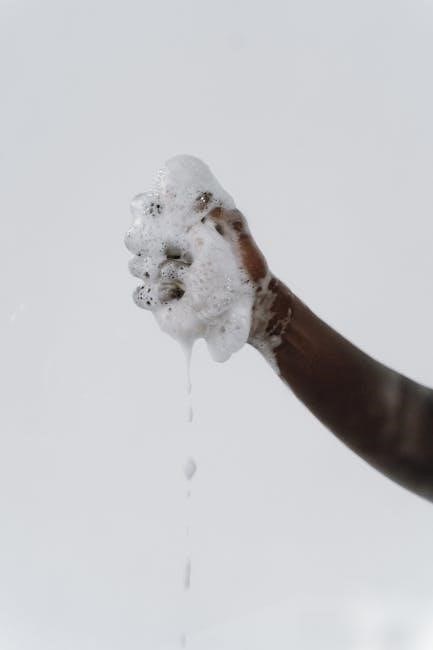
The Patagonia Nano Puff Jacket is a lightweight‚ versatile insulated jacket designed for outdoor activities. Its durable construction and water-resistant finish make it a popular choice for adventurers. Proper washing and care are essential to maintain its performance and extend its lifespan. Understanding the material composition and following care instructions ensures the jacket remains in great condition. This guide provides detailed tips on washing‚ drying‚ and maintaining the Nano Puff Jacket to keep it looking and performing like new.
1.1 Overview of the Patagonia Nano Puff Jacket
The Patagonia Nano Puff Jacket is a lightweight‚ insulated layer designed for outdoor enthusiasts. Its compact design and versatile aesthetic make it suitable for various activities‚ from hiking to everyday wear. The jacket features a durable water-resistant finish and synthetic insulation‚ providing warmth without bulk. Its popularity stems from its balance of performance‚ comfort‚ and style‚ making it a go-to choice for adventurers seeking reliability in changing conditions.
1.2 Importance of Proper Washing and Care
Proper washing and care are essential to maintain the Patagonia Nano Puff Jacket’s performance and longevity. Incorrect methods can damage the fabric‚ reduce insulation loft‚ or compromise the water-repellent finish. Following care instructions ensures the jacket retains its warmth‚ durability‚ and water resistance. Regular cleaning prevents dirt buildup‚ while avoiding harsh chemicals and high heat preserves the material’s integrity. Proper care extends the jacket’s lifespan‚ keeping it functional and looking its best for years of outdoor adventures.
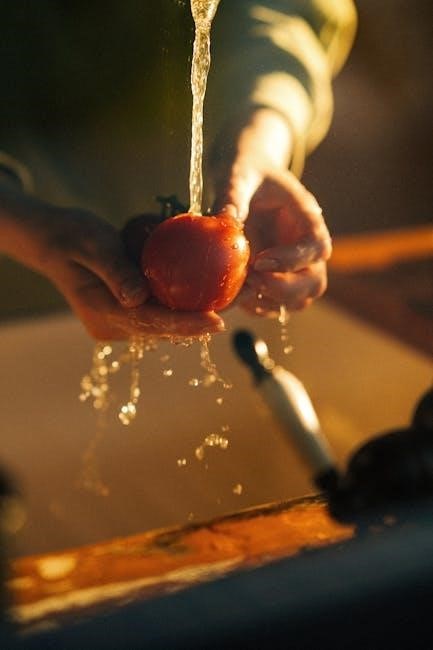
Understanding the Fabric and Material
The Patagonia Nano Puff Jacket is made from lightweight‚ water-resistant fabric with recycled insulation‚ ensuring durability and breathability. Its material design balances warmth and versatility for outdoor use.
2.1 Material Composition of the Nano Puff Jacket
The Patagonia Nano Puff Jacket is crafted from a 100% recycled polyester shell and insulated with PrimaLoft® Gold Eco insulation. This material composition offers exceptional warmth‚ lightweight feel‚ and water-resistance. The fabric is durable yet breathable‚ making it ideal for various outdoor activities. The use of recycled materials aligns with Patagonia’s environmental commitment‚ ensuring both performance and sustainability. Proper care is essential to maintain its water-repellent properties and overall integrity.
2.2 Unique Properties of the Fabric
The Nano Puff Jacket’s fabric boasts unique properties that enhance performance. It is lightweight‚ breathable‚ and water-resistant‚ making it ideal for outdoor activities. The PrimaLoft® Gold Eco insulation provides excellent warmth even when wet. The fabric’s durable water-repellent finish sheds moisture‚ while its recycled polyester construction supports sustainability. These properties ensure the jacket remains functional and comfortable in various conditions. Regular care helps maintain its water-repellent qualities and overall performance‚ extending its lifespan for years of reliable use.
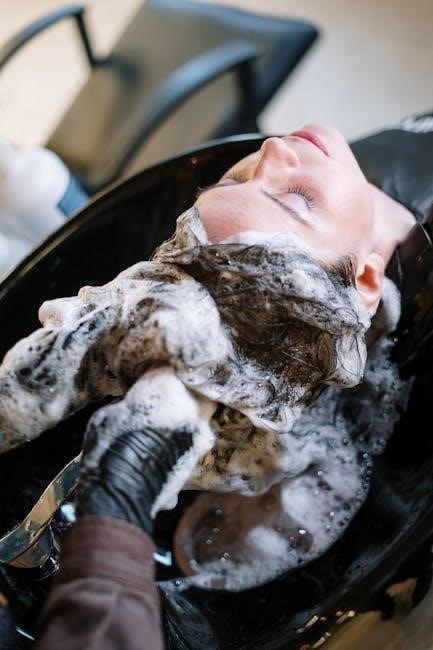
Decoding the Care Labels
Understanding the care labels is essential to maintain the Nano Puff Jacket’s performance and longevity. Ignoring these symbols can lead to irreversible damage.
3.1 Symbols and Their Meanings
The care label on the Patagonia Nano Puff Jacket features universal symbols indicating washing‚ drying‚ and ironing instructions. A tub of water signifies machine washing‚ while a hand in the tub suggests gentle cycle or hand washing. A circle with a diagonal line means do not bleach. Drying symbols include a square for machine drying and a square with a horizontal line for air drying. Understanding these symbols ensures proper care and prevents damage to the jacket’s materials and insulation.
3.2 Common Care Label Mistakes to Avoid
Ignoring care label symbols is a frequent mistake‚ leading to improper washing or drying. Using harsh detergents or high heat can damage the jacket’s fabric and insulation. Over-drying or using fabric softeners can also harm the material. Misinterpreting symbols‚ such as assuming all synthetics can handle high heat‚ is another common error. Always follow the recommended guidelines to preserve the jacket’s performance and longevity.
General Washing Instructions
Always check the care label before washing. Turn the jacket inside out to protect the fabric. Use a mild detergent and cold water for best results.
4.1 Machine Washing: Best Practices
Machine wash the Patagonia Nano Puff Jacket in a front-loading washer or one without an agitator to prevent damage. Turn the jacket inside out to protect the fabric. Use cold water and a gentle‚ non-detergent soap specifically designed for washing down or synthetic insulation. Avoid fabric softeners‚ bleach‚ or harsh chemicals. Gently remove excess water without wringing‚ and ensure the detergent is fully rinsed out. This method maintains the jacket’s loft and water-repellent finish.
4.2 Hand Washing: A Gentle Alternative
For a gentle clean‚ hand wash the Patagonia Nano Puff Jacket in cold water using a mild‚ non-detergent soap. Submerge the jacket in a clean sink or basin‚ gently massaging the fabric to remove dirt. Avoid wringing or twisting‚ as this can damage the material. Rinse thoroughly to ensure all soap is removed. Gently squeeze out excess water without wringing‚ then lay flat to air dry. This method is ideal for maintaining the jacket’s loft and water-repellent finish.
4.3 Choosing the Right Detergent
When washing the Patagonia Nano Puff Jacket‚ use a mild‚ non-detergent soap specifically designed for technical fabrics. Avoid harsh chemicals‚ bleach‚ or fabric softeners‚ as they can damage the water-repellent finish. Look for detergents labeled as “waterproof safe” or “for synthetic insulation.” Eco-friendly options are recommended to align with Patagonia’s environmental values. Always check the detergent label to ensure compatibility with synthetic materials and waterproof coatings.
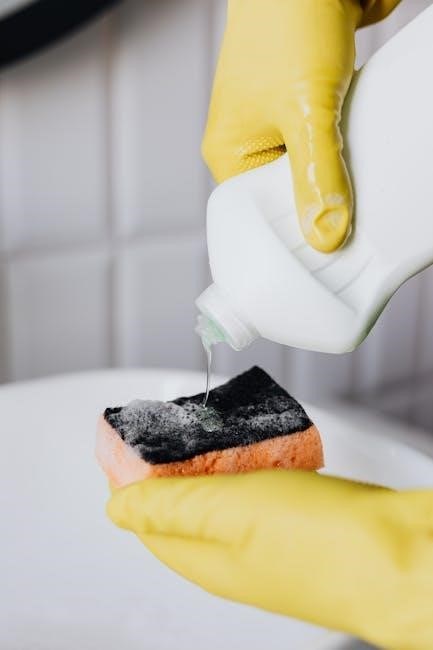
Drying Instructions
Air drying is recommended to maintain loft and insulation. Tumble dry on low heat if necessary‚ but avoid direct sunlight and high heat to prevent damage.
5.1 Air Drying: The Recommended Method
Air drying is the best way to preserve the Nano Puff Jacket’s loft and insulation. Lay it flat on a clean towel‚ reshaping it to its original dimensions. Avoid direct sunlight‚ as it can cause fading. Gently blot excess moisture with a clean towel. Do not hang‚ as this may stretch the fabric. Air drying prevents heat damage and maintains the jacket’s water-repellent finish‚ ensuring optimal performance. This method aligns with eco-friendly practices by reducing energy consumption.
5.2 Machine Drying: Tips and Precautions
Machine drying the Nano Puff Jacket is possible but requires caution. Use a low heat setting to prevent damage to the synthetic insulation. Remove immediately after the cycle to avoid wrinkles. Check the care label for specific instructions. Avoid high heat‚ as it can degrade the fabric and insulation. Using a clean towel inside the dryer can help absorb moisture. Ensure the jacket is not overcrowded during drying to maintain its shape and performance.
5.3 How to Maintain Loft and Insulation
To maintain the Nano Puff Jacket’s loft and insulation‚ avoid exposing it to high heat‚ which can damage the synthetic insulation. Air drying is recommended‚ but if machine drying‚ use a low heat setting. Store the jacket in a cool‚ dry place‚ avoiding compression for extended periods. Fluff the jacket after washing to restore its loft. Using a gentle detergent helps preserve the insulation’s performance and extends the jacket’s lifespan.
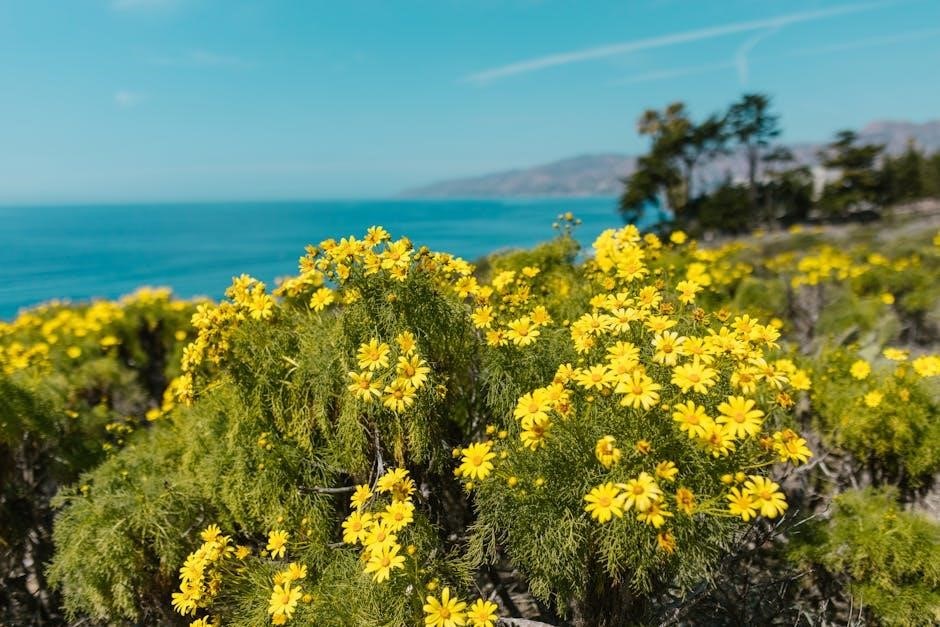
Specialized Cleaning
Specialized cleaning involves addressing stains‚ odors‚ and deep cleaning. Use mild detergents for stains‚ baking soda for odors‚ and gentle cycles for deep cleaning without damaging insulation.
6.1 Stain Removal Techniques
For stain removal‚ gently blot spills with a clean cloth to prevent absorption. Apply a mild detergent directly to the stain‚ let it sit for 10 minutes‚ then rinse with cold water. Avoid harsh chemicals or abrasive scrubbers‚ as they can damage the fabric or insulation. For oil-based stains‚ pre-treat with a solution of equal parts water and white vinegar before washing. Always test a small‚ inconspicuous area first to ensure no damage occurs.
6.2 Odor Removal: Natural and Chemical Methods
For odor removal‚ start with natural methods like airing the jacket or using a vinegar solution. Mix equal parts water and white vinegar‚ apply to the smelly area‚ and rinse with cold water. For persistent odors‚ use a mild detergent specifically designed for synthetic fabrics. Avoid harsh chemicals that can damage the material. For tough smells‚ consider ozone treatment or fabric refreshers‚ but always test a small area first to ensure no discoloration occurs.
6.3 Deep Cleaning for Heavy Use
For deep cleaning the Patagonia Nano Puff Jacket after heavy use‚ machine wash it on a gentle cycle using cold water and a mild detergent. Avoid fabric softeners or bleach‚ as they can damage the fabric. Pre-treat stains with a soft-bristled brush or a cleaning product designed for synthetic materials. After washing‚ reshape the jacket while damp to maintain its fit. Air dry thoroughly to preserve insulation and water-repellent properties.
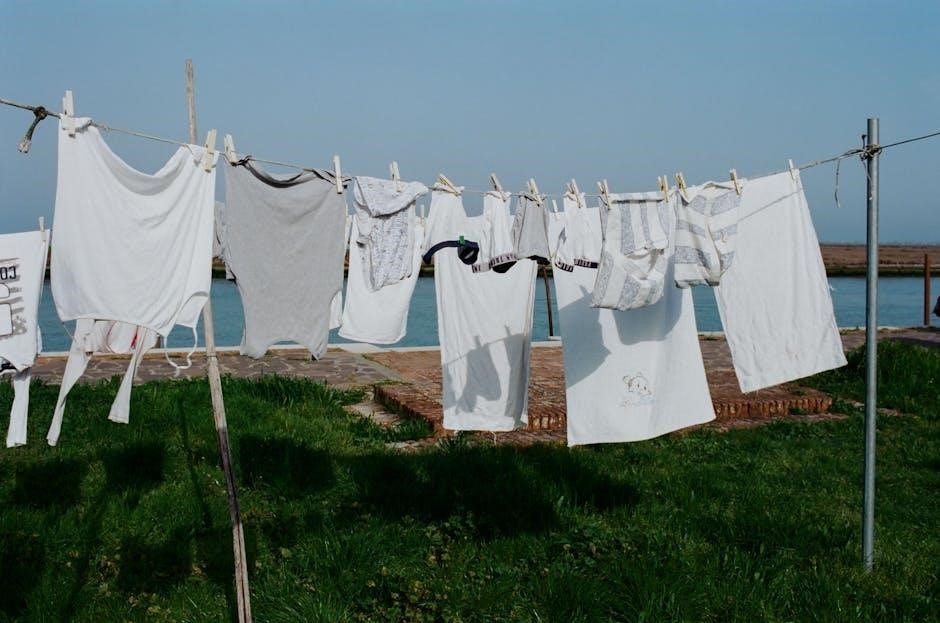
Maintaining Water-Repellent Finish
Maintaining the water-repellent finish on your Patagonia Nano Puff Jacket ensures it continues to perform optimally. Regular wear and washing can diminish the DWR (durable water repellent) coating‚ so periodic reapplication is necessary. Patagonia recommends using environmentally-friendly waterproofing products specifically designed for synthetic fabrics‚ as generic treatments may not be as effective or could harm the material. Always follow the product instructions for application‚ whether it’s a wash-in treatment or a spray-on formula. It’s important to apply the treatment to clean‚ dry fabric for the best results. Avoid using fabric softeners or bleach‚ as they can degrade the water-repellent properties. If the jacket is heavily soiled‚ pre-wash it with a mild detergent before applying the waterproofing treatment. For optimal performance‚ reapply the DWR after every 10-15 washes or when water no longer beads up on the surface. Patagonia also offers repair services through their Worn Wear program if the jacket’s finish is severely compromised. Remember‚ a well-maintained water-repellent finish not only enhances the jacket’s functionality but also extends its lifespan‚ keeping you dry and comfortable in various weather conditions. By taking the time to properly care for the finish‚ you ensure your Nano Puff Jacket remains a reliable companion for your outdoor adventures.
7.1 When to Reapply Waterproofing
Reapply waterproofing to your Patagonia Nano Puff Jacket when the water-repellent finish begins to degrade. Look for signs like water soaking into the fabric rather than beading up. This typically occurs after 10-15 washes or heavy use. Before reapplying‚ wash the jacket in mild detergent to ensure clean fabric. Avoid using fabric softeners or bleach‚ as they can damage the DWR coating. Timely reapplication ensures optimal performance in wet conditions‚ maintaining the jacket’s functionality and extending its lifespan.
7.2 Recommended Waterproofing Products
For the Patagonia Nano Puff Jacket‚ use Nikwax Tech Wash or Grangers Performance Wash to restore the water-repellent finish. These products are specifically designed for synthetic insulation and won’t damage the fabric. Apply a spray-on waterproofing treatment after washing for extra protection. Avoid using household detergents or fabric treatments‚ as they can harm the DWR coating. Always follow the manufacturer’s instructions for application. Regular use of these products ensures the jacket’s waterproofing performance and longevity.
7.3 DIY vs. Professional Treatment
DIY waterproofing with products like Nikwax or Grangers is cost-effective and convenient for maintaining your Nano Puff Jacket. These products are easy to apply at home and provide reliable results. Professional treatment is recommended for heavily soiled or damaged jackets‚ ensuring a deeper restoration. For best results‚ avoid harsh chemicals and always follow Patagonia’s guidelines. Reapplying DWR after washing is essential to maintain water repellency and performance.
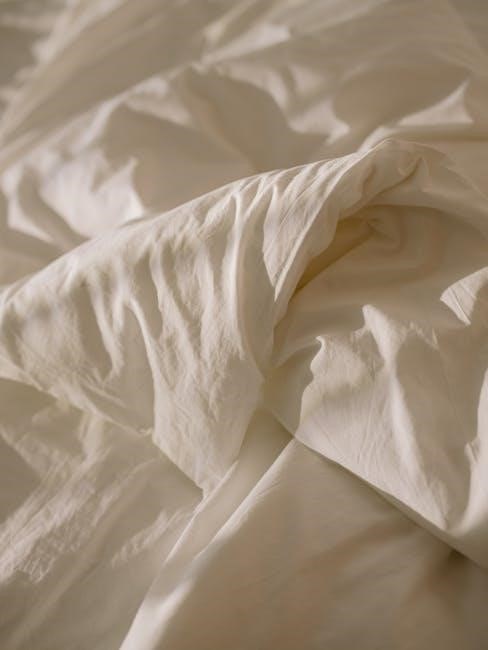
Common Washing Mistakes to Avoid
Over-washing‚ using harsh detergents‚ and high heat can degrade the Nano Puff Jacket’s material and insulation. Avoid these mistakes to preserve its performance and longevity.
8.1 Over-Washing: Why It’s Harmful
Over-washing the Patagonia Nano Puff Jacket can break down its synthetic insulation‚ reducing loft and warmth. Excessive washing also wears down the fabric‚ damaging its water-repellent coating. This leads to faded colors and a less durable product. To maintain performance‚ wash only when necessary and follow Patagonia’s care guidelines. Over-washing shortens the jacket’s lifespan‚ so gentle‚ infrequent cleaning is key to preserving its quality and functionality over time.
8.2 Using the Wrong Detergent
Using the wrong detergent on your Patagonia Nano Puff Jacket can damage its fabric and strip away its water-repellent finish. Harsh chemicals can break down the synthetic insulation‚ reducing its loft and warmth. Instead‚ use a mild detergent specifically designed for technical fabrics. Avoid bleach or fabric softeners‚ as they can harm the material. Proper detergent choice helps maintain both the jacket’s performance and its durability over time.
8.3 High Heat: A No-Go for Nano Puff
Exposing the Patagonia Nano Puff Jacket to high heat can irreparably damage its synthetic insulation and fabric. Avoid using hot water‚ as it can break down the material’s structure. Similarly‚ never tumble dry the jacket on high heat‚ as this can melt the synthetic fibers and destroy its loft. Always opt for cold water and low-heat or air drying to preserve the jacket’s performance and extend its lifespan.

Eco-Friendly Washing Considerations
Prioritize eco-friendly detergents‚ cold water‚ and shorter cycles to minimize environmental impact. Patagonia’s commitment to sustainability aligns with these practices‚ extending the jacket’s lifespan responsibly.
9.1 Using Eco-Friendly Detergents
Opt for mild‚ eco-friendly detergents free from harsh chemicals‚ bleach‚ or softeners‚ which can harm the Nano Puff’s fabric and water-repellent finish. These detergents are gentler on the environment and maintain the jacket’s performance. Patagonia recommends avoiding industrial cleaners‚ as they degrade synthetic insulation. Eco-friendly options align with Patagonia’s environmental ethos‚ ensuring the jacket remains functional while reducing ecological impact. Always check detergent labels for biodegradability and low phosphate content to support sustainable practices.
9.2 Reducing Water and Energy Consumption
To reduce water and energy consumption when washing your Patagonia Nano Puff jacket‚ opt for cold water cycles and avoid unnecessary washes. Spot clean stains instead of washing the entire jacket. Line drying is more energy-efficient than machine drying and preserves the jacket’s water-repellent finish. Washing only when necessary minimizes wear and tear‚ aligning with Patagonia’s environmental values. Eco-conscious practices extend the jacket’s lifespan while reducing your ecological footprint.
9.3 Patagonia’s Environmental Commitment
Patagonia is deeply committed to environmental responsibility‚ emphasizing sustainable practices in both manufacturing and care of their products. The Nano Puff jacket‚ made from recycled materials‚ reflects this dedication. By following eco-friendly washing and care methods‚ you support Patagonia’s mission to reduce waste and minimize environmental impact. Their commitment extends to promoting repair‚ reuse‚ and recycling‚ encouraging customers to adopt greener habits that align with their values of protecting the planet.
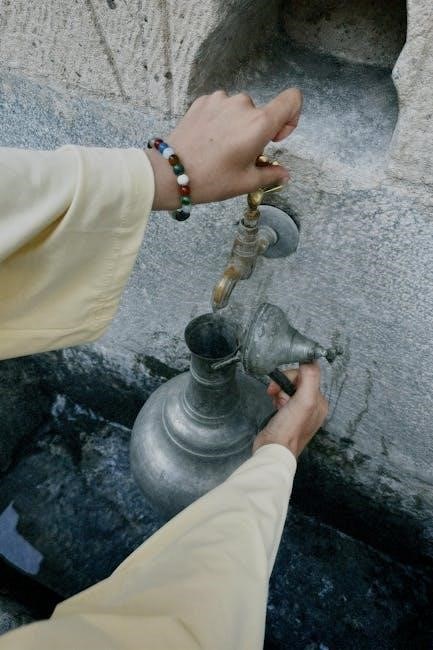
Patagonia’s Worn Wear Program
Patagonia’s Worn Wear program promotes sustainability by encouraging repair‚ reuse‚ and recycling of gear‚ aligning with their environmental values and extending the life of your Nano Puff jacket.
10.1 What is Worn Wear?
Patagonia’s Worn Wear program is an initiative that celebrates the stories behind worn and repaired gear‚ promoting sustainability by encouraging customers to repair‚ reuse‚ and recycle their clothing. By extending the life of products‚ it reduces waste and the environmental impact of manufacturing new items. The program offers resources for repairs and highlights the value of well-loved gear‚ fostering a culture of longevity and care. It also includes workshops and guides to help customers fix their own clothing‚ further reducing the need for replacements.
10.2 Repairing vs. Replacing: The Sustainable Choice
Repairing your Patagonia Nano Puff Jacket is a sustainable alternative to replacing it‚ reducing waste and conserving resources. Patagonia’s Worn Wear program encourages customers to extend the life of their gear by offering repair services and DIY guides. Repairing not only reduces environmental impact but also preserves the memories and stories attached to your jacket. By choosing to repair‚ you support sustainable practices and reduce the need for new production‚ aligning with Patagonia’s eco-friendly mission.
10.3 How to Get Involved
To get involved with Patagonia’s Worn Wear program‚ visit their official website and explore the repair resources and DIY guides. Attend workshops at Patagonia stores or participate in events that promote sustainable practices. Share your repair stories and tips online to inspire others. By joining the movement‚ you contribute to reducing waste and extending the life of your Nano Puff Jacket. Learn more here.
Proper washing and care extend the Nano Puff Jacket’s lifespan. Gentle cycles‚ air drying‚ and eco-friendly detergents preserve its loft and performance‚ ensuring years of reliable use.
11.1 Summary of Key Care Tips
Wash the Nano Puff Jacket in cold water using a gentle cycle and mild detergent to prevent damage. Avoid fabric softeners and bleach‚ as they can degrade the material. Reshape the jacket while wet to maintain its form and allow it to air dry away from direct sunlight. For stains‚ treat them gently before washing‚ and avoid high heat in machine drying. Regular care ensures the jacket retains its insulation‚ loft‚ and water-repellent properties.
11.2 Extending the Lifespan of Your Nano Puff Jacket
To extend the lifespan of your Nano Puff Jacket‚ avoid over-washing and high heat‚ which can degrade its insulation and water-repellent finish. Store it in a cool‚ dry place when not in use to prevent moisture buildup. Regularly refresh it with mild detergent and air drying to maintain its performance. Patagonia’s Worn Wear program encourages repairs over replacements‚ ensuring your jacket remains functional and sustainable for years.

Additional Resources
Explore Patagonia’s official care guides‚ recommended detergents‚ and community forums for tailored advice on maintaining your Nano Puff Jacket.
12.1 Patagonia’s Official Care Instructions
Patagonia provides detailed care instructions on their website‚ ensuring optimal maintenance of your Nano Puff Jacket. These guidelines cover washing‚ drying‚ and reapplying waterproofing. They emphasize using mild detergents and avoiding high heat. Additionally‚ Patagonia offers repair guides and sustainability tips to extend the jacket’s lifespan. Visit their official site for downloadable care PDFs and video tutorials tailored to your Nano Puff.
12.2 Recommended Washing Products
For the Patagonia Nano Puff Jacket‚ use mild‚ non-abrasive detergents free from bleach or harsh chemicals. Patagonia recommends their own Worn Wash or similar eco-friendly options. Avoid fabric softeners‚ as they can degrade water-repellent coatings. Opt for detergents designed for synthetic or technical fabrics to preserve insulation and performance. Always follow the instructions on the product label to ensure the best results for your jacket.
12;3 Community Tips and Forums
Online forums and communities offer valuable insights for washing the Patagonia Nano Puff Jacket. Websites like Reddit’s r/OutdoorGear and Patagonia’s official forums share tips from experienced users. Many recommend using gentle detergents like Nikwax or Tech Wash. Users also advise avoiding fabric softeners and high heat. Facebook groups dedicated to outdoor gear often discuss care routines. YouTube tutorials provide visual guides for spot cleaning and maintaining water resistance. These resources offer practical advice from real users.

